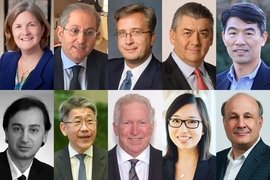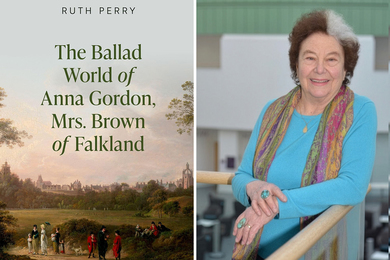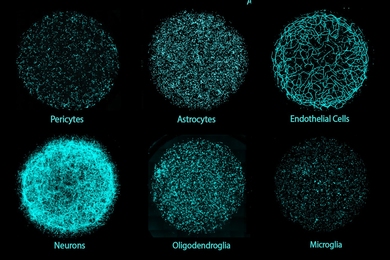The MIT Corporation — the Institute’s board of trustees — elected nine full-term members, who will each serve for five years, one partial-term member, who will serve for two years, and four life members, during its quarterly meeting held today. Corporation Chair Robert B. Millard ’73 announced the election results, and all positions are effective July 1.
The nine full-term members are: Nancy C. Andrews ’85; Nicolas E. Chammas ’87; Arunas A. Chesonis ’84 (second term); José Antonio V. Fernández Carbajal; Perry Young Soo Ha ’85; Fariborz Maseeh ’90 (second term); Philip C. T. Ng ’85 (second term); Phillip T. Ragon ’72 (second term); and Anita Xiao Qi Wu ’16. The partial-term member is David M. Siegel ’91.
The four life members are: Ursula M. Burns; Mark R. Epstein ’63; Mark P. Gorenberg ’76; and Diana C. Walsh.
The Corporation also announced Hyun-A Park ’85 as the 2017-2018 president of the Association of Alumni and Alumnae of MIT, effective July 1. As such, she becomes ex officio member of the Corporation and of the Corporation Joint Advisory Committee on Institute-Wide Affairs. She succeeds Chammas, who will return to the Corporation for a five-year term.
As of July 1, the Corporation will consist of 76 distinguished leaders in education, science, engineering, and industry; of those, 25 are life members and eight are ex officio. An additional 34 individuals are life members emeritus.
Life members serve without a specific term until they turn 75 years old, while term members serve for five years. Both types of members have voting rights in the Corporation. Alumni nominees and representatives of recent graduating classes also serve five-year terms. At age 75, life members become life members emeritus; while they no longer have a vote, they continue to play an active role in Institute affairs.
This year’s elected term members:
Nancy C. Andrews, dean of the School of Medicine, vice chancellor for academic affairs, Nanaline H. Duke Professor of Pediatrics, and professor of pharmacology and cancer Biology at Duke University
Andrews received her PhD in biology from MIT in 1985, her bachelor’s and master’s degrees in molecular biophysics and biochemistry from Yale University in 1980, and her MD in 1987 from Harvard Medical School. Joining the Harvard Medical School in 1993, she worked in the Department of Pediatrics at Children’s Hospital and the Dana-Farber Cancer Institute, led a research lab, served as an attending physician, and taught medical and graduate students. Her research has led to advances in understanding iron biology and iron diseases. She served as director of the Harvard-MIT MD/PhD Program from 1999 to 2003 and as dean for basic sciences and graduate studies from 2003 to 2007. That year, she joined Duke University’s School of Medicine, where as dean she was responsible for managing the budget, educational programs, research, and a faculty of more than 2,200 physicians and scientists. From 1993 to 2006, she was also an investigator for the Howard Hughes Medical Institute.
Nicolas E. Chammas, chair of Elie D. Chammas and Co. Holdings and vice-chair of Cedrus Bank
Chammas is chair of Elie D. Chammas and Company Holdings, a trade and services company; vice chair of Cedrus Bank; and chair of the Beirut Traders Association, the oldest economic body and employers’ organization in Lebanon, representing one-third of the Lebanese economy. Chammas has written several books on the Lebanese economy and society, and is founder and former president of the MIT Club of Lebanon. He served as president of the MIT Alumni Association’s Board of Directors from 2016 to 2017, as vice president from 2010 to 2013, and as first international term member from 2007 to 2009. For more than 10 years, he has chaired the board of advisors of the MIT Enterprise Forum for the Pan Arab Region and has been the Educational Council’s Regional Chair for the Arab World. He received his master’s degree in civil and environmental engineering from MIT, his bachelor’s degree from American University in Beirut, and his MBA from Harvard University.
Arunas A. Chesonis, CEO and chairman of Sweetwater Energy
Chesonis holds a bachelor’s degree in civil engineering from MIT, an MBA from the William E. Simon Graduate School of Business at the University of Rochester, and an honorary Doctorate of Laws from the University of Rochester. Since 2012, Chesonis has been chairman of the board and CEO of Sweetwater Energy, which develops technology to break down nonfood biomass into low-cost sugar and lignin to produce biochemicals, bioplastics, and biofuels. Previously, he served as chairman and CEO of PAETEC Holding Corp., a Fortune 1000 telecommunications firm acquired by Windstream Corp. in 2011. Chesonis has a long history of entrepreneurship, especially in the clean technology sector, and has previously won the Ernst and Young Entrepreneur of the Year award. He has provided early stage funding for five MIT spinouts, including Ubiquitous Energy, Gradiant Corp., and C2Sense. His family office fund, Cranberry Capital, has invested in 15 young technology companies since inception, primarily focusing on sustainability and life sciences.
José Antonio V. Fernández Carbajal, executive chairman of the board of FEMSA
Fernández holds a degree in industrial engineering and systems from Tecnológico de Monterrey, where he also earned an MBA in 1978 and, for more than 20 years, has been a professor of planning systems. Fernández began his career at FEMSA in 1987, serving in various positions, including CEO of OXXO. He was appointed CEO of FEMSA in 1995 and chair of the board in 2001, serving in both positions until January 2014. In 2010, he was appointed vice president of Heineken’s board of directors and chair of Heineken’s Americas Committee. Since 2012, Fernández has been chair of the board of Tecnológico de Monterrey, where he served as vice chair from 1997 to 2012. He is also chair of the board for Coca-Cola FEMSA, chair of the FEMSA Foundation, and chair emeritus of the U.S.-Mexico Foundation. Currently, he’s a board member of Industrias Peñoles and Grupo Televisa, and co-chairs the Mexican chapter of the Woodrow Wilson Center.
Perry Young Soo Ha, managing director at Draper Athena
Ha earned a bachelor’s degree in chemical engineering in 1985 and a master’s degree in biochemical engineering in 1987, both from MIT, and an MBA in 1994 from Harvard Business School. Perry started his career as an engineer at MemTek in 1987. He then moved to Amicon in 1988, where he managed research and development, and developed new products for life-science applications. After completing his MBA degree, he joined Gemini Consulting as a management consultant, where he advised Fortune 1000 clients with product development and technology management processes. His clients ranged from telecommunications to chemicals companies. In 1997, he moved to Silicon Valley and co-founded Athena Technology Ventures, an early-stage venture capital firm, later renamed Draper Athena. He established an office in Seoul, South Korea, in 2008, and in Hong Kong and HeFei, China, in 2015. He invests in early-stage tech companies working with semiconductors, robotics, big data, mobile technologies, and artificial intelligence, among others.
Fariborz Maseeh, founder and president of The Massiah Foundation and founder and managing principal of Surlamer Investments
Maseeh earned a bachelor’s degree in engineering and a master’s degree in applied mathematics from Portland State University; a master’s degree in engineering from the University of Texas at Austin; and a PhD in engineering from MIT. Maseeh currently manages several investment funds and operating companies, real estate funds, and entertainment operations. In 1991, he founded IntelliSense, which became one of the world’s fastest-growing microelectromechanical systems (MEMS) companies. Maseeh is a member of the Board of Fellows at Harvard Medical School and the engineering advisory boards at the University of Southern California and Portland State University. Previously, he was a council member at the California Council of Science and Technology and board chair of the Children’s Hospital of Orange County Foundation. He was a trustee of the University of California at Irvine Foundation, a member of the school’s finance committee and engineering advisory board, and a founding member of its entrepreneurship center. He also founded the The Massiah Foundation charity.
Philip C. T. Ng, CEO of the Far East Organization
Ng holds a bachelor’s degree in civil engineering from King’s College, London University, and two master’s degrees from MIT in technology and policy and in city planning. Ng is CEO of the Far East Organization, a family-owned property-development and investment group in Malaysia and Australia, and a director of Hong Kong-based Sino Group. The Far East Organization has built more than 770 developments in the residential, hospitality, retail, commercial, health care, and industrial space sectors in Singapore, where it is the largest private residential landlord. The Far East Organization is the winner of 2010 FIABCI World Prix d’Excellence awards, the highest honor in international real estate, and has built a significant presence in Australia, having invested more than $2 billion in projects since 2013. It has partnerships in the hospitality business with The Straits Trading Company and Toga Group in Australia, operating a global portfolio of more than 90 properties, totaling nearly 14,000 rooms across seven countries.
Phillip T. Ragon, CEO, founder, and owner of InterSystems Corporation
The son of a U.S. Air Force fighter pilot, Ragon graduated from high school in Bogotá, Colombia. He received a bachelor’s degree in physics from MIT in 1972. Since founding InterSystems in 1978, he has led the company to worldwide prominence in the database, interoperability, and health care application markets. Ragon is a trustee of Massachusetts General Hospital (MGH), where he also served as honorary co-chair of the MGH Campaign. He serves on the Harvard Medical School Board of Fellows, and is a co-chair of the MIT Campaign for a Better World. In 2008, Ragon helped create the Ragon Institute, a joint research center of MGH, MIT, and Harvard University. The vision of the Ragon Institute is to “harness the immune system,” and its immediate objective is the creation of a vaccine for HIV. Ragon is a signatory to The Giving Pledge. In 2003, Ragon received the Ernst and Young Entrepreneur of the Year Award.
Anita Xiao Qi Wu, associate at AlixPartners LLP
Wu earned an MBA from MIT Sloan School of Management in 2016. She has two bachelor’s degrees, in psychology and management, both from the University of New South Wales in Sydney, Australia. Wu is currently a consultant at the New York office of the consulting firm AlixPartners, where she focuses on creating value through organizational effectiveness. At MIT, Wu was active in student-led clubs and Institute initiatives, serving on the Presidential Advisory Cabinet to President Reif, chairing the Breaking the Mold conferences on workplace equality, participating in the $100K Entrepreneurship Competition, and representing students at the MIT Campaign launch. She received the Henry Dupont III Team Achievement Award in 2015 and the Martin Trust Community Fellowship in 2016, becoming the only MBA student recognized in both years. Since 2009, Wu has been running a nonprofit organization that provides free literacy and skills classes and microfinancing to more than 300 adults in rural Nepal.
David M. Siegel, co-chair of Two Sigma
Siegel received his PhD in electrical engineering and computer science in 1991 from MIT. He received his bachelor’s degree from Princeton University in 1983. Prior to co-founding Two Sigma, Siegel was chief technology officer and managing director at Tudor Investment Corporation. After earning his PhD, Siegel joined D. E. Shaw and Co. While there, he became the company’s first chief information officer and founded and served as president of FarSight Financial Services, the world’s first integrated personal financial services website. Siegel currently sits on the Board of Directors of the Hamilton Insurance Group, the Scratch Foundation, NYC FIRST, and NAF. He is also a trustee of Carnegie Hall; an executive advisory committee member of the National Science Foundation/MIT Center for Brains, Minds and Machines; an advisory board member of Stanford University’s Center on Philanthropy and Civil Society; a member of the Cornell Tech Board of Overseers; and a member of the Corporation Visiting Committee for the MIT Media Lab.
This year’s elected life members:
Ursula M. Burns, chair of the Xerox Corporation
Burns received a bachelor’s degree from Polytechnic Institute of New York in 1980 and a master’s degree in mechanical engineering from Columbia University in 1981. She is the chair of the board of Xerox Corporation, having served in the position since 2010. She served as CEO from 2009 to 2016. Burns joined Xerox as an intern in 1980, and has held leadership posts spanning corporate services, manufacturing, and product development. She was named president in 2007. During her tenure as CEO, she helped the company transform from a global leader in document technology to the world’s most diversified business services company. In 2009, she spearheaded the largest acquisition in Xerox history, the $6.4 billion purchase of Affiliated Computer Services. In 2016, she led Xerox through a separation into two independent companies — the document-oriented Xerox Corporation, and the business-process services company, Conduent Incorporated — which has enhanced the corporation’s competitive positions and created significant value creation opportunities.
Mark R. Epstein, senior vice president of development at QUALCOMM Incorporated
Epstein received a bachelor’s degree in 1963 and a master’s degree in 1964 in electrical engineering from MIT, and a PhD in electrical engineering from Stanford University in 1968. Since 1986, Epstein has been senior vice president of development at QUALCOMM Incorporated. In his role, he guides corporate international development activities, technical standards, and the development of intercorporate relationships in support of the company’s wireless businesses. From 1980 through 1986, Epstein was deputy for communications, command, control and intelligence (C3I) in the Office of the Secretary of the U.S. Army, where he led the electronic research and development programs. Previously, Epstein held senior operations and management positions as staff assistant for theater of C3I in the Office of the Secretary of Defense from 1976 to 1980, program director at Computer Sciences Corporation from 1974 to 1976, and manager of research and development at Northrop Corporation’s Page Communications Engineers subsidiary from 1968 to 1974.
Mark P. Gorenberg, managing director at Zetta Venture Partners
Gorenberg earned his bachelor’s degree from MIT in 1976 in electrical engineering. He received his master’s degree in electrical engineering from the University of Minnesota in 1979 and his master’s degree in engineering management from Stanford University in 1984. Gorenberg has spent most of his business career in venture capital. He is the founder and managing director of Zetta Venture Partners, the first early-stage fund focused only on the intelligent enterprise. Prior to founding Zetta, he was at Hummer Winblad Venture Partners for 23 years and has served on the boards of numerous successful startups, including Omniture, AdForce, Scopus Technologies, Domo, and InsideSales. Prior to his career in venture capital, Gorenberg served as a software executive, entrepreneur, and a member of the initial SparcStation team at Sun Microsystems. In 2011, Gorenberg was appointed by U.S. President Barack Obama to the Council of Advisors on Science and Technology (PCAST), a 21-person advisory group of America’s leading scientists and engineers.
Diana C. Walsh, president emerita of Wellesley College
Walsh earned a bachelor’s degree in English from Wellesley College in 1966, and a master’s degree in journalism in 1971 from Boston University (BU), where she also earned a PhD degree in health policy in 1983. At BU, she was associate director of the Health Policy Institute and a professor at the School of Public Health. In 1990, Walsh joined the Harvard School of Public Health as a professor and chair of the Department of Health and Social Behavior. In 1993, she was elected president of Wellesley College. During her tenure, Wellesley revised its curriculum, expanded global education and other educational programs, restored the campus landscape, and constructed a new campus center. In 2007, Walsh completed the third-longest presidency in Wellesley’s history. Walsh is a member of the American Academy of Arts and Sciences and has published on social factors affecting the health of populations, health and health care, higher education and, more recently, climate change.
This year’s elected president of the Association of Alumni and Alumnae of MIT:
Hyun-A Park, president of Spy Pond Partners, LLC
Park received a bachelor’s degree in 1983 and a master’s degree in 1985 in city planning from MIT. Park is co-founder and president of Spy Pond Partners. She started her career working for MIT professor Tunney Lee at the Massachusetts Division of Capital Planning and Operations, and then worked on the Central Artery (“Big Dig”) project. From there, she went to Cambridge Systematics, where she was in charge of a business line focused on transportation asset management. Park is active in transportation research activities nationally. She is currently chair of the Technical Activities Council of the Transportation Research Board, where she leads a group of chairs that oversee more than 200 committees and 6,000 volunteers on research activities related to all modes of transportation and a wide range of transportation topics. Park is also the co-chair of the Women’s Transportation Seminar’s Public Art Project that will install a new public art piece at South Station in Boston.










